Sonic Advance 1 GBA: Unleashing Sonic's Retro Speed on Game Boy Advance
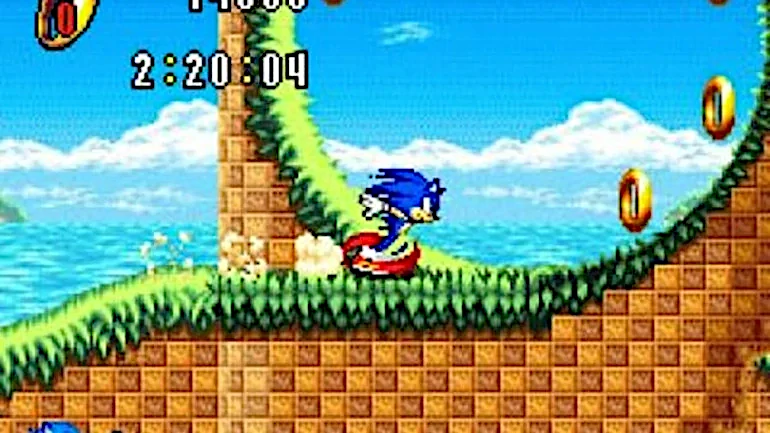
Aging brings with it the unique satisfaction of being at the right place at the right time, where you can firsthand experience something special, like Sonic Advance. Nostalgia is the bedrock of retro games, and Sonic the Hedgehog stands out as a significant example that has left enduring moments in the minds of gamers throughout history.
In the early '90s, SEGA recognized the importance of creating a credible platforming mascot to rival the charm of Super Mario World. Witnessing Sonic's inaugural appearance on Nintendo consoles in 2002 with Sonic Adventure 2 for GameCube in Japan (2001) marked a pivotal moment in gaming.
Upon the release of Sonic Advance on the Game Boy Advance, the development was entrusted to capable hands. The creative minds at Dimps collaborated with the seasoned Sonic Team, all under the watchful eye of producer Yuji Naka.
Dimps had previously crafted Sonic the Hedgehog Pocket Adventure for the Neo Geo Pocket Color in 1999, and this prior experience played a pivotal role in shaping the core mechanics of GBA Sonic. While Sonic's speed may seem slightly subdued compared to the Mega Drive game, the 2D platforming level design and obstacles continue the legacy, challenging players to thwart the nefarious plans of Doctor Eggman in his pursuit of the seven Chaos Emeralds. Maneuvering through rings, conveyor belts, bounce springs, and collection rings becomes a dynamic experience, heightened by the anticipation of discovering speed boots, invincibility, and barrier power-ups.
Surprisingly, the first level immerses players in the Neo Green Hill area right on the beach, complemented by tropical music reminiscent of the Koopa Beach track from Super Mario Kart. However, the discerning player will soon recognize that Sonic Advance's design draws inspiration from 2D Sonic classics, including the pinball-themed casino section in Sonic 2. As an intriguing twist, you can even recreate a CPU-controlled Tails from that era by entering a cheat code.
Graphics of Sonic Advance 1
Visually, the game is vibrant and lively, showcasing a taller and "cooler" Sonic design that is beautifully animated. It's a joy to witness him smoothly gliding over water, deftly swinging between hooks, and executing graceful leaps off zip lines. Sonic enthusiasts will also appreciate the ability to actively control his interactions with the environment.
The cutscenes are integrated seamlessly into the level design; any sliding down railings is a momentary burst, with the primary focus always on overcoming the platforms. Notably, one of the graphical highlights is the iceberg area, featuring snowflakes swept by the wind and icy icicles that evoke memories of a similar stage in Sonic 3.
Sound
The audio in Sonic Advance successfully follows the legacy of its predecessors, featuring original themes seamlessly integrated into the series, complemented by familiar sound effects for actions like invincibility and running out of air. Notable distinctions exist between the background visuals and audio, ranging from funky and relaxed jazz accompanying the Casino Paradise area's fireworks to more intense music during one of the game's ten boss battles. Game enhancements, such as the anti-gravity section in Zone 6, contribute to the visual experience; akin to the classic retro game Strider, the world undergoes an upside-down transformation.
Sonic Advance comprises twelve primary levels for a single player, theoretically achievable in less than an hour, along with two additional areas. While the game promotes speed, featuring a time trial mode, the need for caution becomes apparent in the fifth sector of Angel Island, particularly concerning jumps.
Although not unprecedented in the series, Sonic Advance introduces difficulty spikes, like the Bottomless Pit, growing more frequent in later game areas. Players also encounter bulkier Badniks, such as Buzz Bombers and Caterkillers, and spikes shooting up from the ground that are challenging to spot, especially on the small Game Boy Micro screen. The game maintains ease up to the fourth boss in the Ice Mountain, transitioning to a more challenging experience thereafter.
It's not all about Sonic
Sonic Advance transcends the singular focus on Sonic, introducing three additional optional characters. It's pivotal to recognize that level design revolves around a diverse array of character abilities, extending beyond Sonic's iconic running and jumping mechanics.
If Sonic proves challenging, players have the option to embark on a separate journey with Tails, leveraging his propellers for fluid navigation through bottomless pits. The aquatic prowess of Tails and Knuckles facilitates swift water traversal, while Amy's inclusion imparts a traditional 16-bit platforming ambiance, characterized by her slower pace and hammer-wielding attacks instead of transforming into a ball like the other characters.
In a nod to Sonic & Knuckles, Knuckles possesses the ability to glide against walls and climb. Each character's unique abilities unlock alternative routes, contributing to the game's replayability. Challenges diversify as players switch characters to streamline progression and toggle between normal and easy difficulty settings.
Upon completing the initial seven areas, Sonic Advance unveils additional gameplay dimensions. Rather than collecting 50 rings, players must seek out special springs in each level, propelling them to special stages. Here, characters dash through a 360-degree tube, dodging obstacles and collecting a specific number of rings. This theme echoes Sonic 2's special stage, where adept collection of the seven Chaos Emeralds unlocks Super Sonic for an extra boss fight in the Moon Zone.
Sonic Advance offers both single-player and multiplayer packs for up to four players. The single-player pack tasks players with collecting as many rings as possible within a timer while engaging opponents. The multiplayer pack introduces two modes: Pro and Super Hunt. In the competition mode, participants strive to reach the area's end swiftly, while Chao Hunt prompts them to capture as many adorable Chao characters as possible within the time limit. Completing the comprehensive package is a single-player mode centered on Tiny Chao Garden.
The Tiny Chao Garden serves as a rudimentary pet simulator, where players tend to a small super creature, ensuring its happiness through actions like petting, feeding fruit, and purchasing toys. Two mini-games, a card matching game and a rock-paper-scissors-based game, offer engaging diversions within the garden. Notably, owning the Sonic Adventure 2: Versus console game allows players to connect their GBA to GameCube, expanding the Chao Garden experience.
Gameplay
Bezel
You can download the game's bezel or overlay by clicking here.
In Conclusion
If you had told players in 1991 that the beloved Sonic the Hedgehog would make its way to Nintendo in 2002, you might have faced accusations of blasphemy. This historical twist adds significant value to Sonic Advance as a powerful retro game, and its ability to maintain the classic essence of 2D Sonic platforming design ensures its enduring appeal. Dimps and Sonic Team seamlessly integrate four playable characters, providing players with the freedom to progress in their preferred style.
Whether you choose to navigate Sonic Advance at a deliberate pace, steadily pursuing the seven Chaos Emeralds in each level, or opt for a swift and impulsive journey toward the final X Zone, the backgrounds exude a vibrant vitality. Charming animations and well-crafted audio enhance the game, complementing the timeless classics in the series. The inclusion of multiplayer, along with the connection to the GameCube's Tiny Chao Garden, makes Sonic Advance a delightful experience for fans of both Nintendo and SEGA.
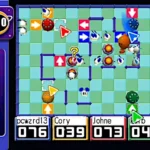 ChuChu Rocket! GBA: A Stellar Challenge for Puzzle Enthusiasts
ChuChu Rocket! GBA: A Stellar Challenge for Puzzle Enthusiasts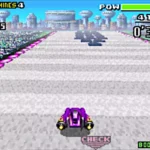 F-Zero: Maximum Velocity - In-Depth Analysis for GBA
F-Zero: Maximum Velocity - In-Depth Analysis for GBA Super Mario Advance - GBA Review: A Classic Adventure Reimagined
Super Mario Advance - GBA Review: A Classic Adventure Reimagined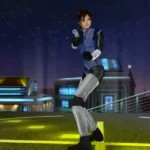 Perfect Dark Review: Exploring the Classic Title on Nintendo 64
Perfect Dark Review: Exploring the Classic Title on Nintendo 64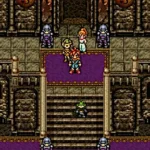 Chrono Trigger SNES Review: A Pixelated Odyssey
Chrono Trigger SNES Review: A Pixelated Odyssey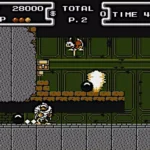 DuckTales NES: A Quacking Good Time in 8-Bit Glory
DuckTales NES: A Quacking Good Time in 8-Bit Glory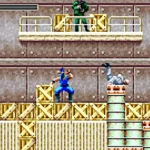 Ninja Five-O GBA: Exploring the Shadows of Game Boy Advance"
Ninja Five-O GBA: Exploring the Shadows of Game Boy Advance"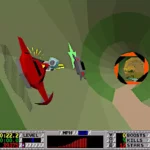 STUN Runner Arcade: Racing Through the Futuristic Frontier
STUN Runner Arcade: Racing Through the Futuristic Frontier

Leave a Reply